Looking for the best wineries in Cafayate, Argentina? This guide to the Cafayate wine region has you covered!
Think of wine in Argentina and I’m fairly sure most people will immediately name Mendoza as the top spot for production.
That’s probably a good thing, because it means that the Cafayate wine region is still a well-kept secret – but surely not for long.
Located in the north of Argentina in Salta province, Cafayate is famous for the Torrontés grape variety, native to the country. This grape loves north Argentina’s dry desert and altitude (Cafayate sits at 1,700 metres above sea level), and it ends up as a fresh, smooth white wine. When we moved to Argentina, discovering this white wine was a highlight, and it’s now my white wine of choice.
While planning for our trip to north Argentina, we made sure we had plenty of time to visit a number of wineries in the region. We spent several days exploring Cafayate, dropping in to sample wines different bodegas. What we found, amongst the dusty vines and mountain views, was a wine region with few crowds and intimate tastings.
Here are some of my favourite wineries in Cafayate. I used to include the prices of wine tastings in Cafayate, but prices fluctuate far too much in Argentina for me to maintain accuracy! However, you’ll find wine tastings to be either free in Cafayate or very reasonable at only a few dollars.

This blog post may contain affiliate links, meaning if you book or buy something through one of these links, I may earn a small commission (at no extra cost to you).
The best wineries in Cafayate
Before I list out my favourite wineries in Cafayate, here’s a map of everywhere I’ve mentioned in this post, as well as a few tips to keep in mind when wine tasting in Cafayate.
Map of the best Cafayate wineries
Things to know before visiting Cafayate wineries
A few things to know before you start planning out your wine tastings in Cafayate:
- Most of the wineries in Cafayate are located close to the town centre, so you can easily walk around. For wineries further out, hire a bike or drive as we did (responsibly, of course!).
- You don’t need a reservation at most wineries in Cafayate to do a wine tasting – simply turn up and start sipping!
- Many wineries offer free tastings or for a minimal fee. I’d list those fees throughout here, but I find that prices change way too quickly in Argentina, so I don’t want to lead you astray!
- Most wineries offer tours, but if you’re anything like me, the information all starts to sound the same, and let’s face it: I’m just there to taste the wine! If you’re the same, then pick one or two wineries that you think you’d like to learn more about and take a tour there, and then focus on just wine tasting at the others.
- Buy your favourite bottles when you’re at the winery. We were so bummed when we fell in love with a particular Piattelli wine and then discovered we couldn’t find it anywhere, not even in any wine stores in Buenos Aires.
1. San Pedro de Yacochuya
The bodega is in a stunning location at the base of the mountains, and its vines are 70 to 100 years old. Their Torrontés is a refreshing delight, and a bottle I consistently go back to.
You’ll need a car to get here, or prepare for a fairly long hike on a bike.
Stop by for a tasting, but if you want a guided tour (free), you’ll need to book ahead by emailing them.
Address: Ruta Prov. Nº 2, kilometre 6


2. Piattelli Vineyards
A beautifully built and more commercial winery, Piattelli is a great place for lunch. It’s one of the newer wineries in Argentina.
We skipped the winery tour here and instead indulged in delicious pasta and desserts and, most importantly, their 2014 Grand Reserve Malbec. We’ve been searching for a bottle of this wine ever since but have had no luck finding one inside or outside of Argentina. This is the reason why I recommend you buy the bottles you love direct from the winery!
Address: Ruta Prov. Nº 2
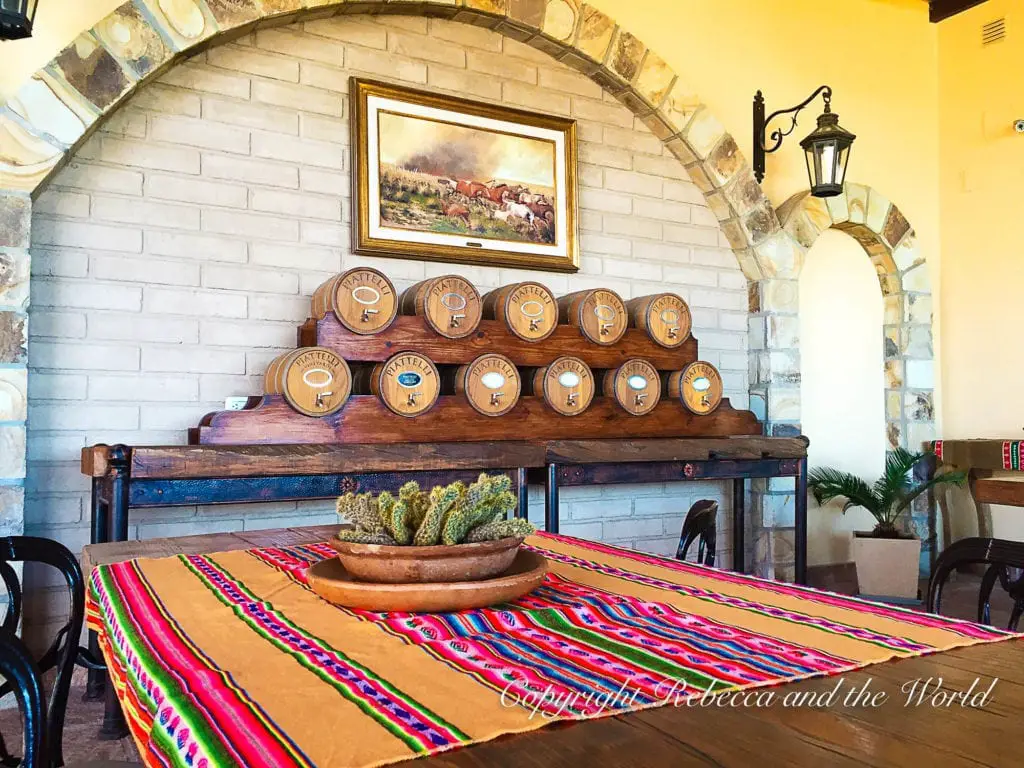
3. El Esteco
Coming in to Cafayate along Argentina’s famous Ruta 40, El Esteco is the first winery you’re likely to see. This beautiful whitewashed building is framed by mountains and they’ve created an amazing experience here.
We opted out of the wine tour and went straight for a tasting of their Don David and Ciclos lines. Wine tasting prices are reasonable, and the pours quite generous.
Bodega El Esteco also puts on special “Magical Nights” events, with evening wine tastings and food around a campfire.
You can book wine tastings at this Cafayate winery online.
The winery also has a stunning luxury hotel, Patios de Cafayate.
Address: Ruta 40, kilometre 4343

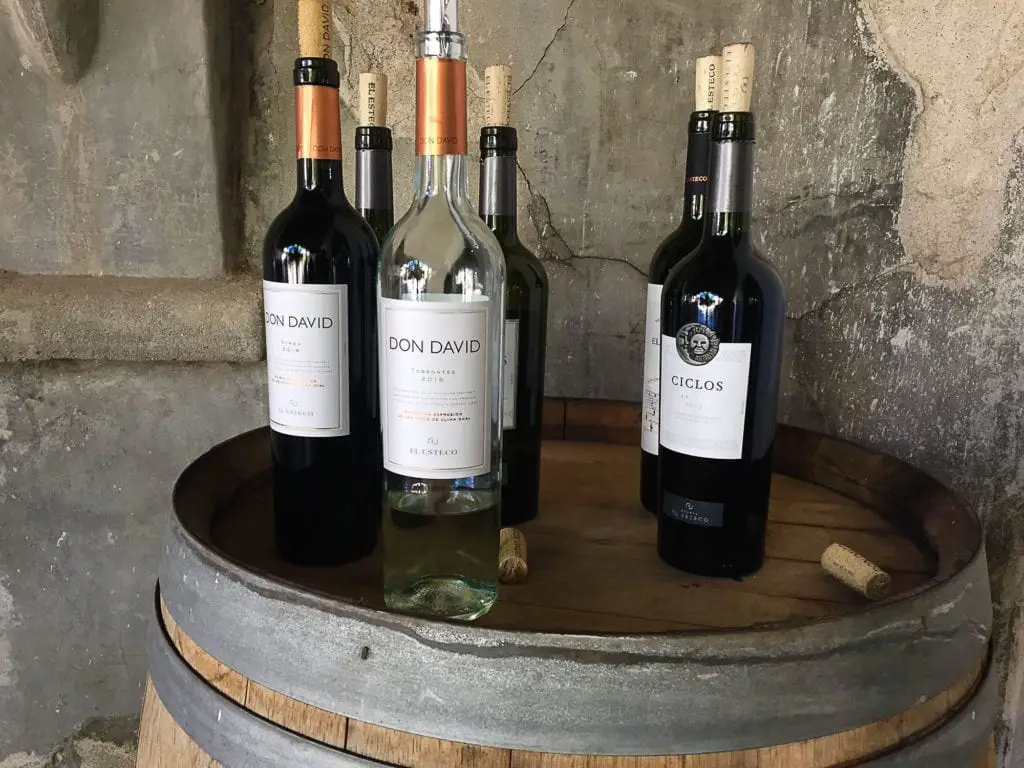
4. Bodega Nanni
Bodega Nanni produces organic wines right in the heart of town.
The bodega offers two tastings: regular and premium, both for a reasonable price. The guide who led our tasting was very informative and it was a relaxed tasting session with a small group.
There’s a garden area outside, so you can sit and enjoy another glass of wine when you’ve finished the tour.
Address: Silverio Chavarría 151
5. El Porvenir
El Porvenir was my favourite tasting experience.
Located right in town, El Porvenir has a dedicated tasting room that was already set up for our group of four when we arrived. The guide was knowledgeable – and generous with her pours.
This is the only winery in Cafayate that we made a reservation for – but you don’t have to. If you want the tour and tasting (daily, 11am and 4pm) you do need to book in advance.
If you’re just after a tasting, they’re held daily at 10am, 12pm, 3pm and 5pm. You can book ahead or turn up just ahead of time.
Address: Córdoba 32
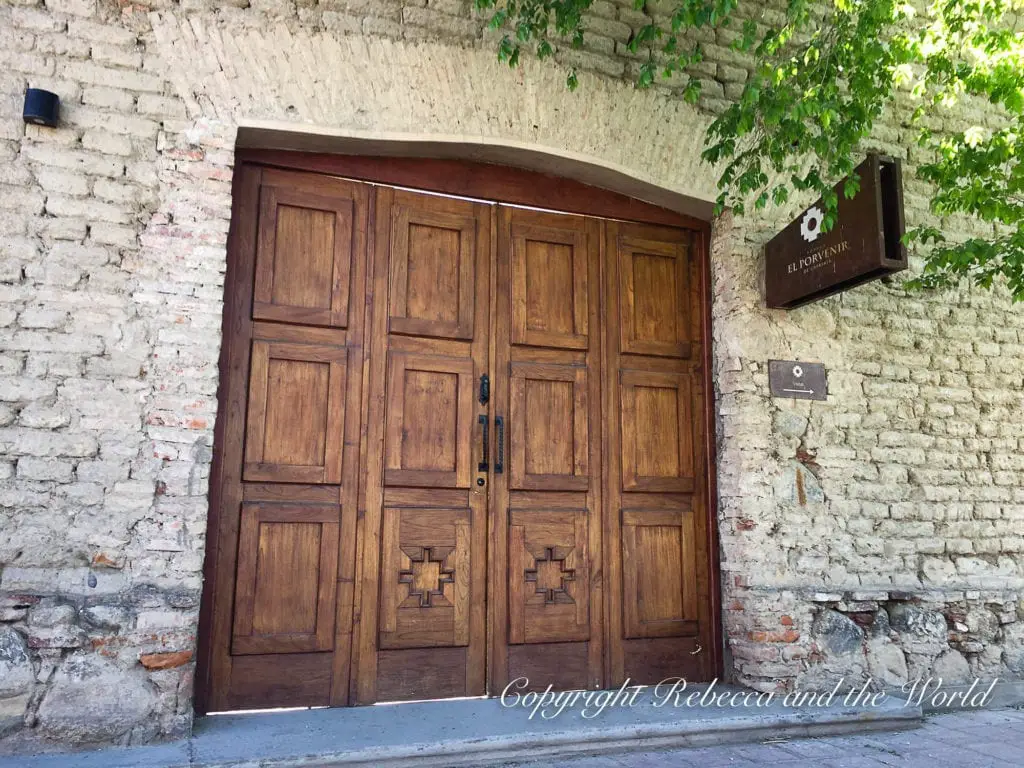

6. Chato’s Wine Bar
It’s not a winery, per se, but Chato’s Wine Bar is a great place to stop in, do a tasting of a variety of Cafayate wines from around the region and nibble on a picada plate (cheese and cold cuts).
The owner and staff are very knowledge about Cafayate wine and can design a degustation to suit your wine style.
Address: San Martín 223
7. Bonus winery: Colomé
Ok, so this is technically not at all near Cafayate but it is a great experience!
Bodega Colomé is a three-hour drive from Cafayate, but if you’re driving between Cachi and Cafayate, add this to your itinerary. The winery is about 20 kilometres off the main road on a bumpy, dusty track, but well worth it.
This is one of the oldest wineries in Argentina.
You need to have an advance reservation for lunch, as well as for a guided tour of the astonishing James Turrell Museum. This museum focuses on light and perception in an utterly mind-blowing way. Plan to spend about 3-4 hours at Colomé (plus that travel time).
Address: Ruta Provincial 53, kilometre 20


Other recommended Cafayate wineries
While we tried very hard, we just couldn’t visit all the wineries in Cafayate! Other recommended wineries to look into are Finca Las Nubes (reservations required), Amalaya and Bodega El Transito.
Other things to do in Cafayate
While wine is a major drawcard of Cafayate, there are plenty of other things to do in Cafayate. Break up wine tasting with a few of these suggestions.
Eat all the alfajores
If you haven’t tried these amazing Argentine sandwich cookies then you are missing out! In Cafayate I found them to be more “rustic” with a homemade feel to them. You can buy boxes of these sweet treats from the stores around the main square – you can’t miss the enormous signs.
Try wine ice cream
If you like your wine extra chilled, then try wine ice cream. Yep, you read that right, in Cafayate you can try Malbec and Torrontes wine. The original can be found at Heladería Miranda, but of course everyone’s serving it these days. It’s definitely one of the more unique things to do in Argentina.
Nibble on goat’s cheese

Try the cheese at Cabras de Cafayate, a goat farm on the outskirts of town. Take a tour of the farm or buy a few goat’s cheeses to taste and grab a picnic table out in the sunshine.
Take a scenic drive
Got a few more days and wondering what to do in Cafayate beyond wine? My top suggestion: take a drive through the Quebrada de las Conchas, one of the most stunning drives. Visit the Garganta del Diablo as well – this huge cavern is quite beautiful.

Cafayate travel guide
Now you know where to go wine tasting in Cafayate, here’s some information so you can plan your trip. I’ve also got a full guide to planning a trip to Argentina with tonnes of handy travel tips, as well as Argentina itinerary ideas.
How to get to Cafayate
The closest airport to Cafayate is in Salta, the capital city of Salta province in the north of Argentina. Flights run daily from Buenos Aires.
I highly recommend making your trip to Cafayate part of a broader road trip through the north of Argentina – it remains one of the best road trips I’ve ever done and I could wax lyrical about the astounding beauty of this region (go check out my post on north Argentina for all the details).
Hire a car in Salta and get on the road for the 3-hour drive to Cafayate. Check car rentals here. I have a guide to renting a car in Argentina with everything you need to know.
If you’re not comfortable driving, buses run from Salta to Cafayate daily (four hours).
There’s also a bus from Buenos Aires to Cafayate, which takes around 20 to 25 hours.
The best time to visit Cafayate
You can visit Cafayate year-round, as the weather is generally pleasant all the time. However, the best time to visit Cafayate and Northwest Argentina is from April to November.
December and January are the hottest months, and also the months with the highest rainfall.
Like in Mendoza, the harvest happens in February/March. This is a great time to visit Cafayate, with seas of green vineyards to be seen and plenty of action.
We visited in September so we didn’t see full, lush vines, but for us the weather was pretty much perfect, with warm, sunny days and coolish nights. There was also hardly anyone around so we often had tasting rooms all to ourselves!
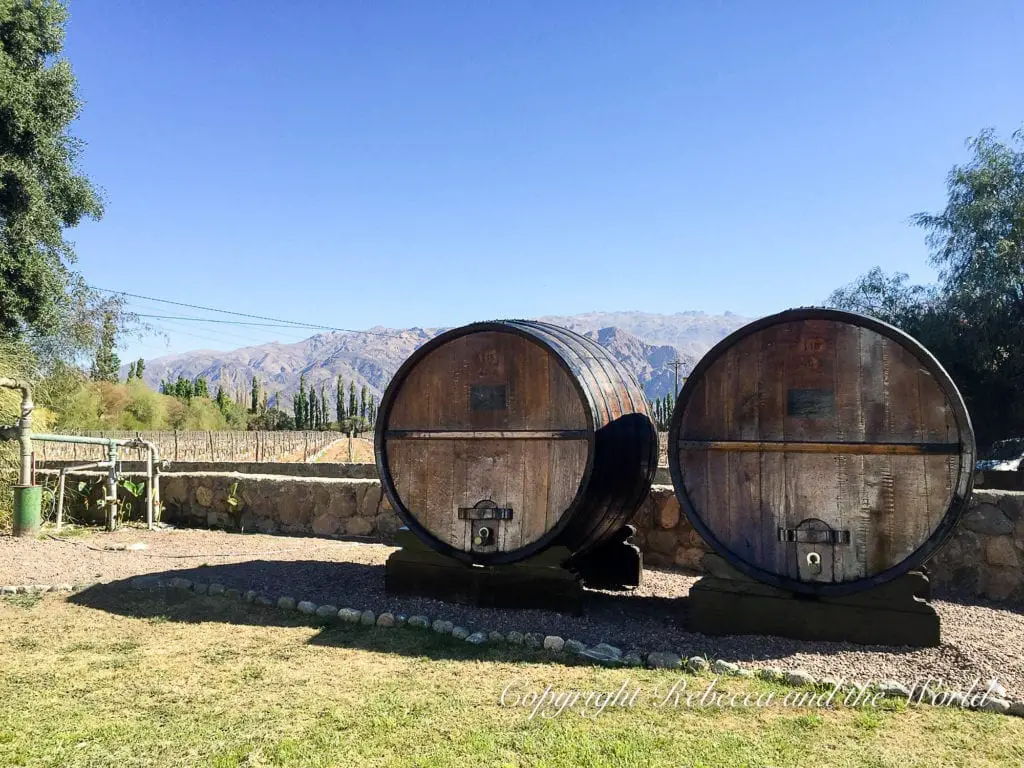
Where to stay in Cafayate
There are so many gorgeous hotels in Cafayate, from rustic accommodations in historic buildings to luxury resorts. Here are a few recommendations.
- Splash out for a room at Grace Cafayate (Ruta Nacional 40, Km 4340). This is where we stayed during our visit to Cafayate. It’s located in a winery and has comfortable rooms (ours had a huge bathtub). Check rates online at Booking.com.
- Villa Vicuña comes highly recommended. This boutique hotel has only 12 rooms in colonial Spanish style. Expect amazing service, from what I hear! Check rates online at Booking.com or Expedia.
Wrap up: Cafayate winery guide
While I do love Mendoza, Cafayate is my favourite wine region in Argentina. Its desert setting is stunning, I love a fresh Torrontés and it’s quieter up here. I highly recommend putting Cafayate on your list if you’re looking for something a little different when you visit Argentina.
I hope this guide has inspired your own visit to Cafayate!
Cafayate wine FAQs
What makes Cafayate unique as a wine region?
Cafayate has high-altitude vineyards – some of the highest in the world – which contribute to a significant temperature variation between day and night. This helps in developing the aromatic qualities and acidity in the wines, particularly the Torrontés, which is a flagship white wine of Argentina known for its floral and citrus notes. My favourite wine!
Which wineries should I not miss in Cafayate?
My top picks are: Bodega El Esteco, known for its exquisite architecture and premium wines; Piattelli Vineyards, offering stunning views and excellent Torrontés; and El Porvenir, which has a great wine tasting program.
Do I need to book winery tours in advance?
Wineries differ. Most you can turn up to without a reservation, but to guarantee a spot, it’s best to book your winery tours in advance, especially during peak tourist seasons. Most wineries do welcome walk-ins for tastings.
Can I visit wineries in Cafayate without a car?
I recommend having a car (and a designated driver!) to explore Cafayate’s wineries at your own pace. You can also hire a bike to visit some of the wineries that are closer to town. You could also consider a winery tour so someone else drives.
What is the best time of year to visit Cafayate’s wineries?
The best time to visit is during the grape harvest season, from late February to early April, when the region comes alive with harvest festivals and you can see the winemaking process in action. Between April and November is the most pleasant time for weather. However, Cafayate enjoys a pleasant climate year-round, making it a great destination at any time.
Are there any accommodations within the wineries?
Yes, several wineries in Cafayate offer accommodations, ranging from luxury lodges to cozy guesthouses, allowing guests to stay amidst the vineyards. Patios de Cafayate is one of the most beautiful options in the region.
What other activities can I enjoy in Cafayate besides wine tasting?
Beyond wineries, you can explore the Quebrada de Cafayate, visit local artisan markets for handmade crafts, and taste regional cuisine (which pairs wonderfully with local wines!). Outdoor activities like hiking, mountain biking and horseback riding are also popular.
Are Cafayate’s wineries family-friendly?
Many wineries welcome families, and some may offer activities or spaces designed for children while parents enjoy the wine tasting. However, it’s best to check with individual wineries beforehand as offerings can vary.
How can I ship wine home from Cafayate?
Many wineries offer shipping services directly to your home country. I definitely recommend doing this at the winery, as some Argentinian wines are hard to find elsewhere in the world. Alternatively, local shipping companies in Cafayate specialise in international wine shipping and can assist with the logistics and customs regulations.
Did you find this article helpful? Consider buying me a coffee as a way to say thanks!
Would you visit the Cafayate wine region? Let me know if you need any help planning your trip, and drop me your questions in the comments below.
Related posts
Looking for more Argentina travel inspiration? You might also like these articles:
- How to spend 2 weeks in Argentina
- 50 incredible things to do in Argentina
- The most amazing places to visit in Argentina
- Argentina travel tips
- Is Argentina safe to visit?
- The most romantic honeymoon destinations in Argentina
- Plan an epic North Argentina road trip
- 3 days in Buenos Aires itinerary
ARGENTINA TRIP ESSENTIALS
- Book your flight to Argentina online with Skyscanner. I like how this site allows you to find the cheapest days.
- Find a great hotel in Argentina. Check prices on Booking.com and Expedia online.
- Check out the huge range of day tours throughout Argentina on GetYourGuide or Viator. There’s something for everyone.
- Keep those bottles of wine you’ll be buying safe in these wine bags.
- A copy of the Lonely Planet guide to Argentina will be handy. Also pick up a Spanish language guidebook to help you navigate your visit.
- One thing I always purchase is travel insurance! Travel Insurance Master allows you to compare across multiple policy providers, while SafetyWing is great for long-term travellers and digital nomads.
PIN IT FOR LATER:
Liked this post? Save this guide to wineries in Cafayate to Pinterest.
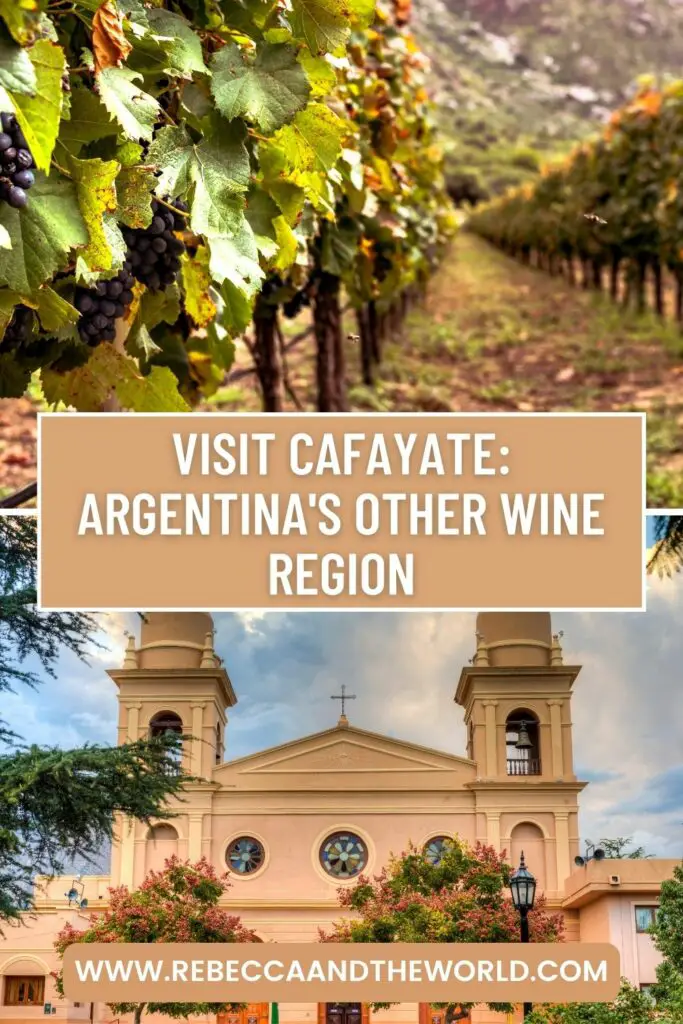
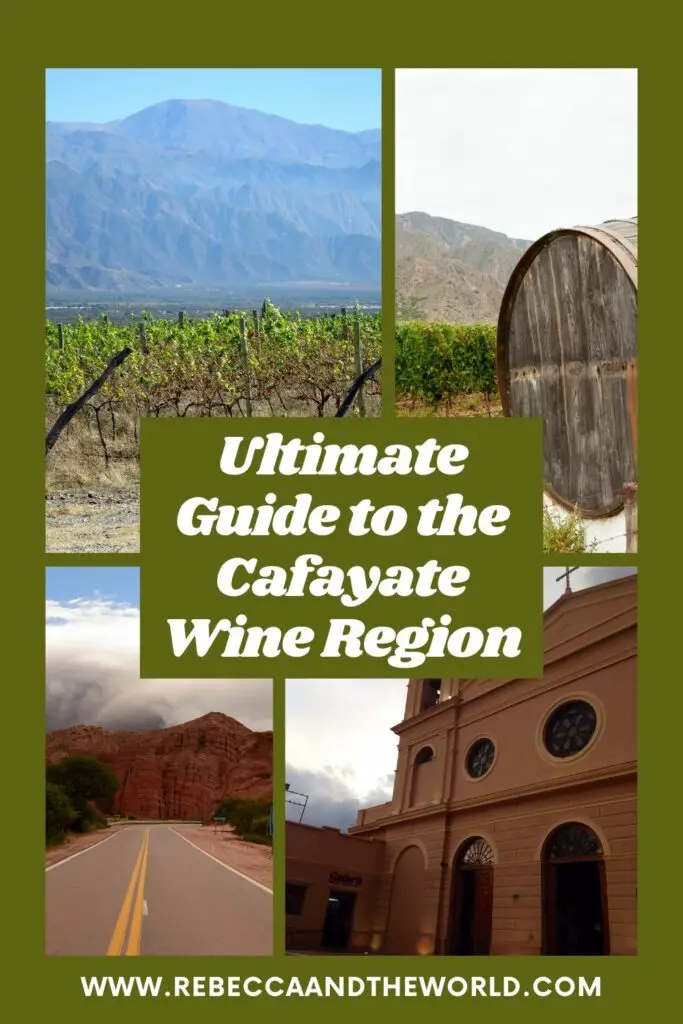



Just wanted to say “Hi!” Found your website while researching a West Texas Road Trip (March 2022). Noticed you had an article on Cafayate, which caught my eye. When I retired in 2003, my son and I took a 9 month road journey from San Diego to Ushuaia and back in a Toyota 4-Runner. Long story short, we got lost in NW Argentina, found ourselves in Tucuman. Next day, looking at the map and guidebook (No GPS!) we saw “Cafayate” was a wine producing region. Nuf Said!
Next day, at the last (of several!) wineries, the cute young Hostess and my son were very busy chatting in Spanish (unfortunately I’m not bi-lingual). I assumed he was getting travel information for the road. Sometimes parents can be naive! Fast forward to December 2005 and my wife CeCe and I were in Cafayate for a wedding. After 5 days of great fun (and a wedding!) CeCe and I were on the bus headed to Bolivia. But that is another story!
Any secret tips on West Texas (or New Mexico) I’m All Ears!
I need to go back to Argentina and do it better than I did my first visit! Saving this for when it happens!
Don’t worry I was the same – after we left I discovered so many other great wineries through other people’s blogs! But yes, get back there! 🙂